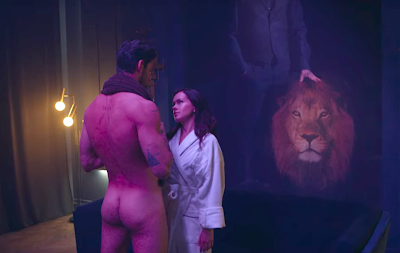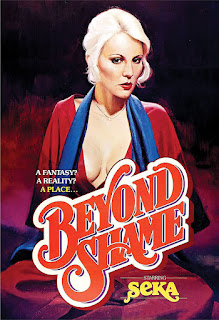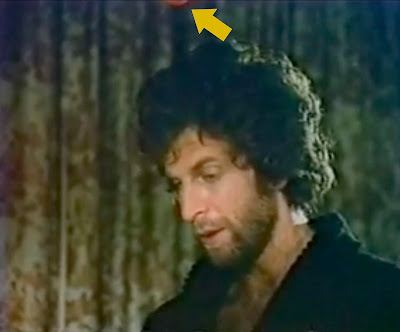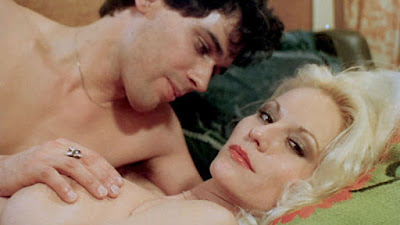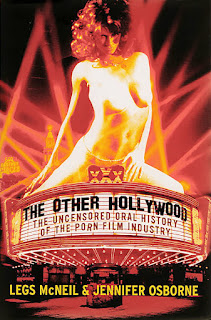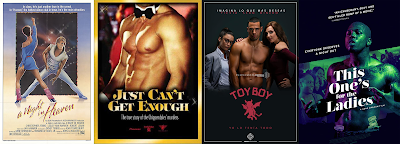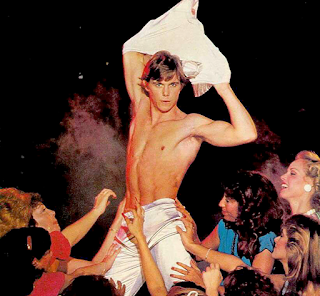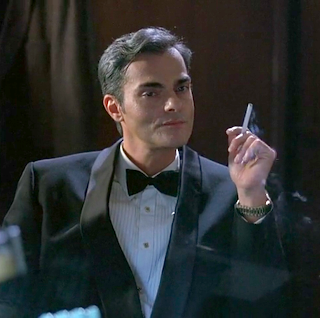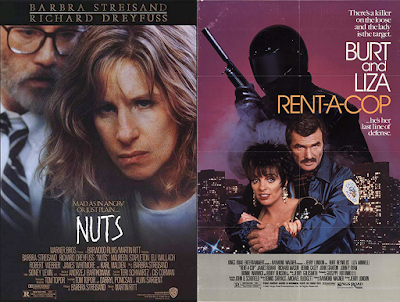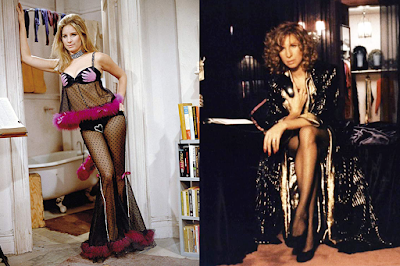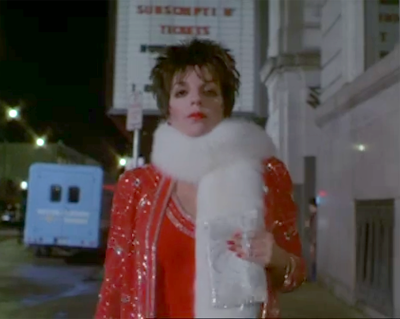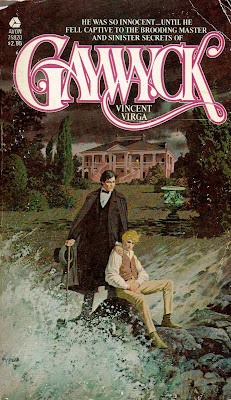 |
| Gaywyck as it first appeared in 1980, published by Avon. |
I thought a lot about that woman’s story while reading Vincent Virga’s GAYWYCK, touted as the first gay gothic romance, published in 1980. Almost all the male characters in this book are written as if they once wore Charvet dresses and had menstrual cycles. In fact, one of the novel’s surprises is there isn’t a revelation that one of our protagonists is a woman in drag, à la Yentl. Were anyone’s nipples described at all, I’m sure they would resemble primroses.
Perhaps no character in Gaywyck could have his gender so easily reassigned as the book’s narrator, Robert Whyte. Really, all it would take is adding an “a” to the end of his first name, changing some pronouns and dressing him in bodices and skirts instead of cardigan vests and double-breasted suits. Robert is a fragile young man, so much so he’s home schooled. He’s shy, but as he explains to the reader: “‘Shy’ is an evasion of the truth. ‘Easily frightened,’ yes. ‘Morbidly sensitive,’ yes. ‘Timid and cautious,’ yes. But also, much more than that.”
His fragility is indulged by his mother during Robert’s early years living in upstate New York, much to the chagrin of his school principal father. Mrs. Whyte’s mental health begins to decline by the time Robert’s reached his teens, however, and she’s soon institutionalized after being diagnosed with “profound melancholia.” With his mother gone, Robert’s father issues an ultimatum: the 17-year-old can go to Harvard, or he can just go. He is no longer welcome in his father’s home. Robert reaches out to a local priest, who helps secure a new home for Robert at the Long Island estate of the wealthy (and obviously named) Gaylord family. “[O]n 28 September 1899, I left for Gaywyck. My fate galloped to meet me.”
Before arriving at Gaywyck, Robert is first taken to Gramercy Park to meet his benefactor, Donough Gaylord, the sole surviving heir to the Gaylord fortune. He’s hot, of course (think Henry Cavill circa The Tudors or Immortals), as well as mysterious and kind of sad, having lost his mother at an early age, and later losing his twin brother, Cormack, and their father in a fire. He’s initially sympathetic to Robert’s plight—his late mother Mary Rose also had mental health issues—but takes a genuine liking of the teen upon discovering Robert’s knowledge of and enthusiasm for the works of Paul Cézanne. Robert is also easy on the eyes (if you limit your choices to the blonds, you can find a NSFW visual representation here).
At Gaywyck Robert meets Brian, the household’s young, ginger-haired houseboy/apprentice chef, initially described as a mute but he’s later revealed to just have a speech impediment. He quickly becomes Robert’s confidante. Robert also meets Julian Denvers, a former Jesuit who had served as the live-in tutor of Donough and Cormack, and Everard Keyes, the twins’ music teacher, who now has only a tenuous grasp of reality (“Sometimes he is Beethoven and sometimes not”). The two men—especially Keyes—aren’t exactly warm and friendly, but as far as the bookish, “morbidly sensitive” Robert is concerned, Gaywyck is heaven on earth. Not only does he have entrée into a world of extravagant wealth like he’s never known, he’s now part of Donough Gaylord’s world. It’s not long before he’s scrawling hearts with D.G. + R.W. written within them on the pages of his journal. (OK, what he really writes in his journal is “We are the same person, Donough Gaylord and I,” but the gist is the same.)
But Gaywyck houses more than beautiful art and old queens. It is also home to many secrets—secrets that involve incest, hidden rooms, child abuse, mutilated penises, faked deaths and murder. There’s even an out-of-nowhere twins-separated-at-infancy revelation. It’s often too much for young Robert to bear, the poor twink fainting from shock at the merest suggestion of a sordid past or ulterior motive. OK, I’m exaggerating. Robert doesn’t pass out that much, but he does spend an inordinate amount of time in bed recuperating from one thing or another during the course of the novel. I shouldn’t throw shade, though. Who among us hasn’t dreamed of being ordered to stay in bed all day at a fancy estate, waited on by a fawning staff? And yet despite all this time lolling about in bed, Robert is described as having a beautiful, athletic body. Gurl, bye!
Robert isn’t the only delicate flower. The strapping Donough is also frequently so overcome with emotion that he can’t finish stories about his past in a single chapter. Brian disappears when distraught, Keyes locks himself in his room, and Denvers becomes bitchy and brooding.
 |
| Gaywyck got a sexed-up cover when Alyson Publications reprinted it in 2000. |
To be fair, the book is set at the turn of the twentieth century, with characters who inhabit the rarefied air of the One Percent, so it’s entirely appropriate that the majority of the men in the story have a keen interest in music, art and literature. It’s not like they’d be talking about James J. Corbett’s chances in the ring against Jim “The Boilermaker” Jeffries. That said, there is only so much swooning over Paul Cézanne or Richard Wagner’s Tristan and Isolde a reader can take. Virga is a very learned man with an impressive resumé (feel free to download a copy) and he makes sure to share his knowledge on every fucking one of Gaywyck’s pages. By the book’s midpoint I felt I was entitled to college credits in art and music appreciation.
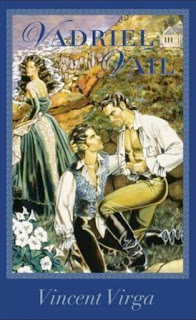 |
| Vincent Virga’s 2001 Gaywyck sequel, Vadriel Vail. |
I know it sounds like I’m shitting all over this novel, but it is not bad. (Armistead Maupin supposedly dug it.) It’s just not to my taste. I bought my copy of Gaywyck a few years ago, excited to discover there was such a thing as a gay Gothic. I tend to prefer a more straight-forward prose, however, and my gay characters a bit more…carnal. Gaywyck’s prose—very purple, bordering on turgid—just isn’t my thing. I enjoyed parts of it more than the whole. One of the parts I especially enjoyed was when we’re introduced to a character named Jonesy, the teen-aged son of a recently deceased employee of Donough’s who comes to stay at Gaywyck. Jonesy is ill-mannered, poorly educated, and willing to use his body to get what he wants (think a young Daniel Craig with poor dental hygiene, or maybe Tiger King’s John Finlay, pre-dentures and minus the tattoos). Jonesy is a horrible character, but he livened up the story considerably. Finally, I thought, after 200 pages this story is springing to life. Alas, Jonesy is only a supporting character, and we’re soon back to the florid observations of Robert Whyte.
Virga published a sequel to Gaywyck, Vadriel Vail, in 2001. A third book in the Gaywyck saga, Children of Paradise, was written in 2010 but it never found a publisher, though there is a copy of the manuscript available to students and faculty of the College of William and Mary. Virga writes on his website about his frustration of trying to get his work re-released:
[A] young twinkie gay editor at Plume recently told my agent he couldn’t understand why anyone would care about old gay romances... He found Gaywyck unreadable! (I admit it bears no resemblance to the dreary stuff being churned out by graduates of the Iowa School of Writing, thank god, which is probably his and most NYC fiction editors’ idea of “real” writing!)
I think that “young twinkie gay editor” was being short sighted, not to mention unfair. There is a market for old gay romances, and that market is straight women. Virga might be asked to punch up the sex scenes, however. (When it comes to sex, Virga is so coy that it’s not always obvious anything naughty has occurred.) I could also see this adapted into a pretty enjoyable movie. A visual medium could bring the story to life in a whole new way, streamlining the narrative by showing in a single shot what the novel takes pages to describe—or show what the novel doesn’t dare describe. Virga would hate it, I imagine, but I’m sure he’d enjoy cashing the check.
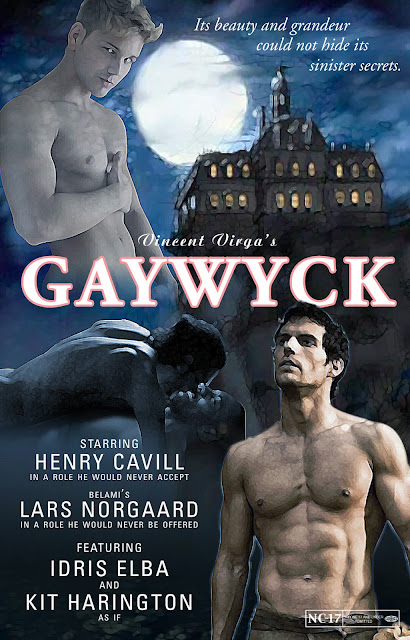 |
| I’d watch it! |
Bonus Vocabulary Section
Not only does Gaywyck bombard one with an avalanche of references to classic literature, art and music, it also expands the reader's vocabulary. Or maybe that’s just me? At any rate, here is a list of some of my newly acquired vocabulary words I can attribute to Gaywyck. I doubt I’ll ever use them in conversation, and I see very few of them finding their way into my writing, but it’s still nice knowing there’s a fancy word for horny.Eventide — end of the day; evening.
Orangery — greenhouse where trees are grown.
Cupidity — greed for money or possessions. (Eileen Bassing gets credit for exposing me to this one first. Who knew I’d encounter the word again so soon?)
Purling — (of a stream or river) flow with a swirling motion and babbling sound.
Gamboge — a strong yellow
Tintinnabulation — a ringing or tinkling sound.
Dado — the lower part of the wall of a room, below about waist height, if it is a different color or has a different covering than the upper part.
Concupiscence — strong sexual desire; lust.







